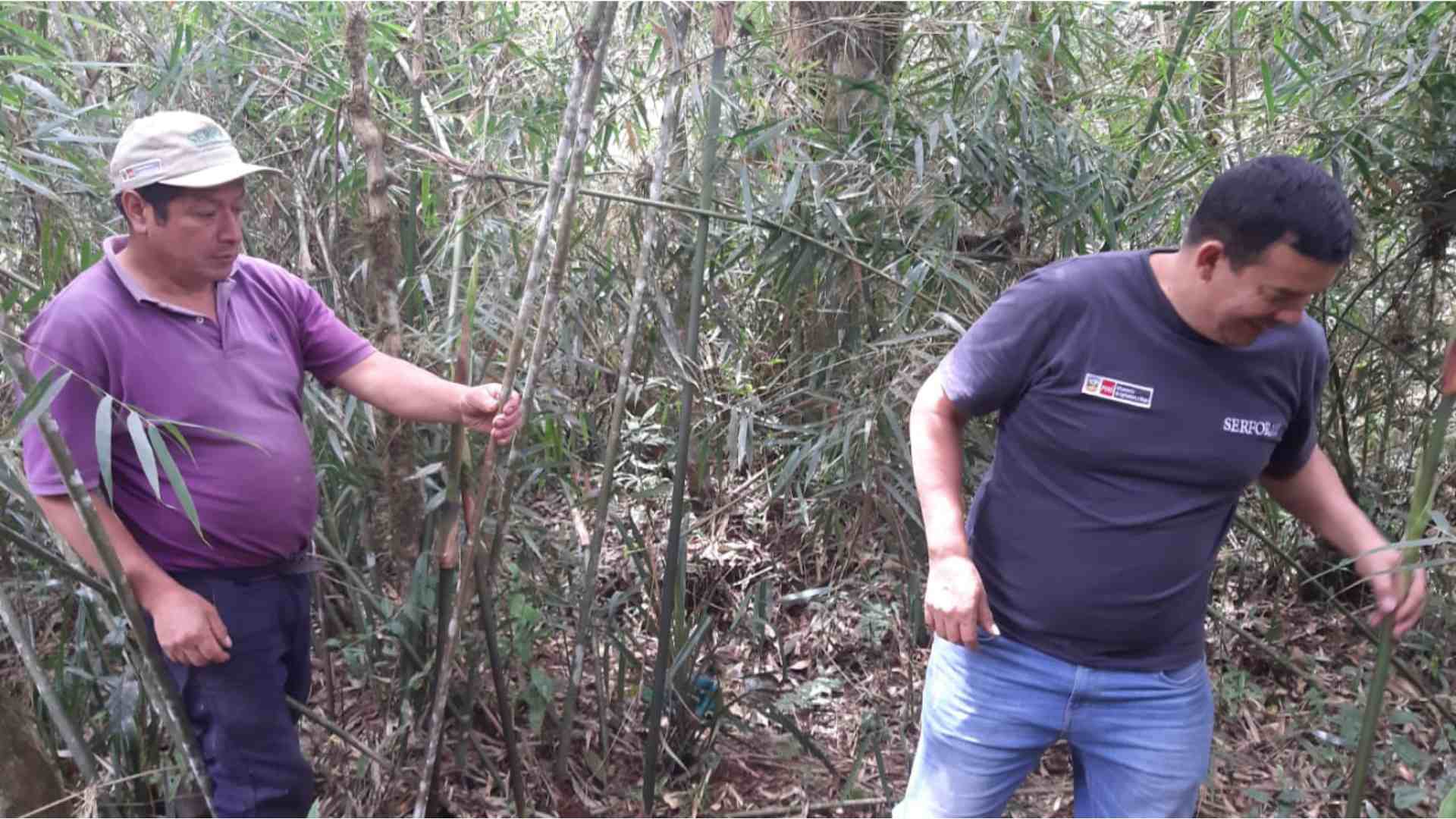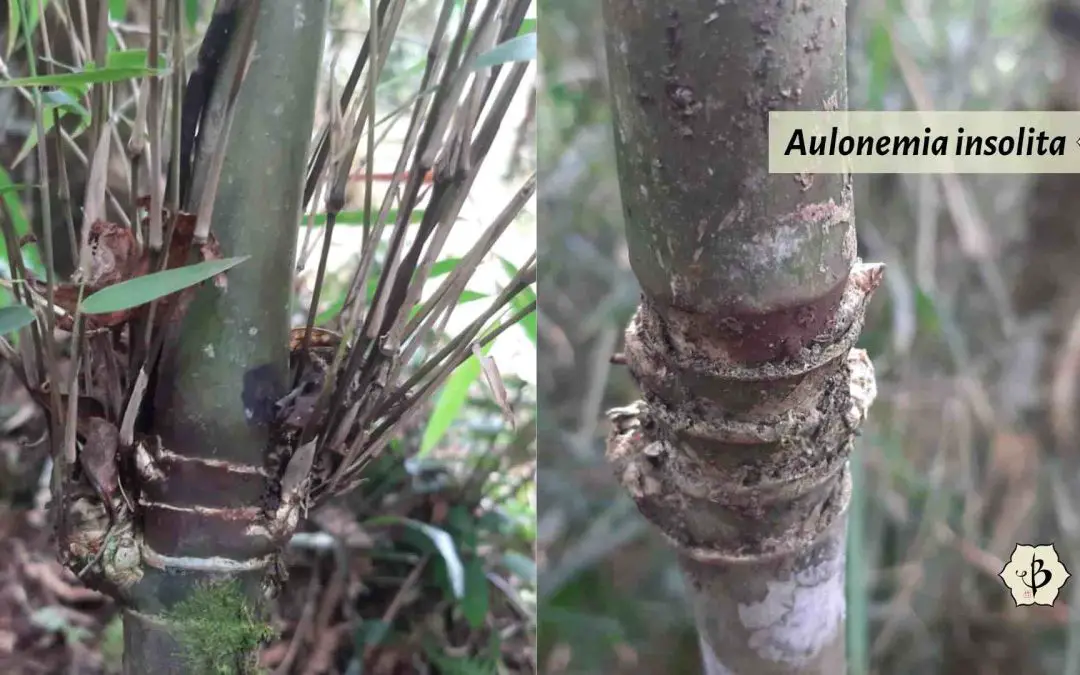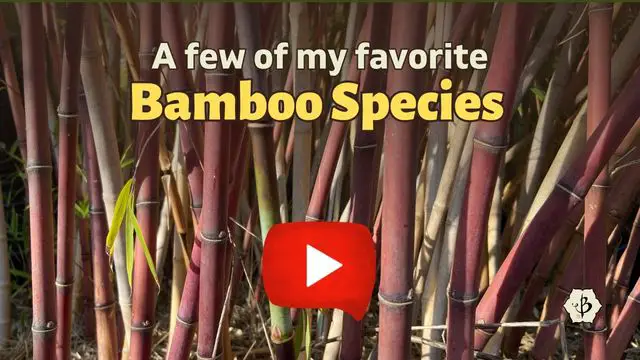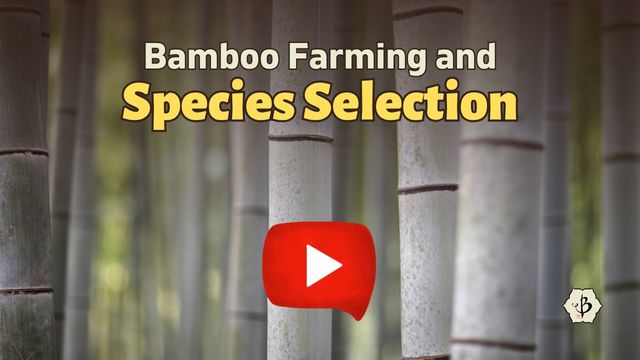Bambu Batu issues a hearty congratulations to Ivan Jiménez-Pérez, Natalia Reátegui, Celia Forella Malpartida-Garay, and Eduardo Ruiz-Sancheza, who have published the description of a newly discovered bamboo species, Aulonemia insolita, endemic to the montane forests of South America. True to its name—derived from the Latin for “unusual”—this exceptional species has a distinctive combination of morphological traits that set it apart from its bamboo relatives.
One of its most notable features is its dimorphic internode pattern, in which a long internode is followed by four to five shorter ones. This contrasts with members of the genus Aulonemia, which typically display only two to four short internodes. Another key distinction is its erect culm leaf blades, a very rare trait for this genus, in which most species have reflexed (curved downward) leaves. Additional unique characteristics include:
- Internodes lined with irregular white lamellae on the inner surface
- Asymmetric culm leaf sheath tips
- Frayed and entangled fimbriae (hair-like structures) along the leaf sheaths
- Deeply cut laciniate outer ligules
Habitat and Distribution
Aulonemia insolita is found in humid montane forests on the eastern slopes of the Andes, specifically in northern and central Peru (Amazonas and Huánuco departments) and western Bolivia (La Paz department). It thrives at elevations between 1,800 and 2,382 meters, growing in relatively undisturbed forests as well as along roadsides and in forest gaps. In some areas, it will even dominate the lower canopy, forming nearly monotypic groves.
Physical Characteristics and Growth
This bamboo reaches heights of 4 to 15 meters, with culms measuring 2 to 4.9 cm in diameter. It grows erect with arching tips, though some individuals arch from the base. The first basal internode can be exceptionally long (170 to 256 cm), while the long upper internodes range from 45 to 100 cm, and the short internodes are just 0.3 to 1.1 cm in length.

Flowering and Reproduction
Aulonemia insolita appears to follow a 7- to 10-year flowering cycle, after which the culms die off. One such event was documented between 2013 and 2014, with seedlings emerging three years later. A new flowering cycle was recorded in May 2024 in Peru, suggesting that this periodic reproductive pattern continues.
Cultural and Practical Uses
Among local communities, this bamboo has proven useful for traditional basket weaving and handicrafts, where its distinct internode structure plays a role in crafting techniques. Other species in the Aulonemia genus have been used for making musical wind instruments, and in some cases, their hollow internodes have been utilized in traditional medicine to treat respiratory ailments.
A Unique Addition to the Bamboo Landscape
The discovery of Aulonemia insolita highlights the continued diversity of bamboo species in Latin America and particularly the Andes, highlighting the importance of further research into this remarkable genus. With its distinctive internodes, unique leaf structure, and ecological significance, this species is a fascinating new addition to the rich botanical tapestry of South America.
Learn more
If you enjoyed reading about this new and unusual bamboo species, you might also wish to peruse some of these related articles.
- Guadua angustifolia in the Colombian highlands
- Thyrsocalamus liang: Natural hybrid of Thailand
- Gigantocalamus malpenensis: Intergeneric hybrid of Malyasia

























